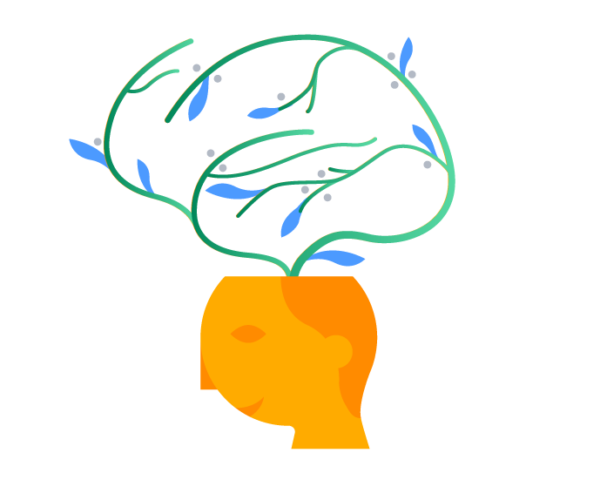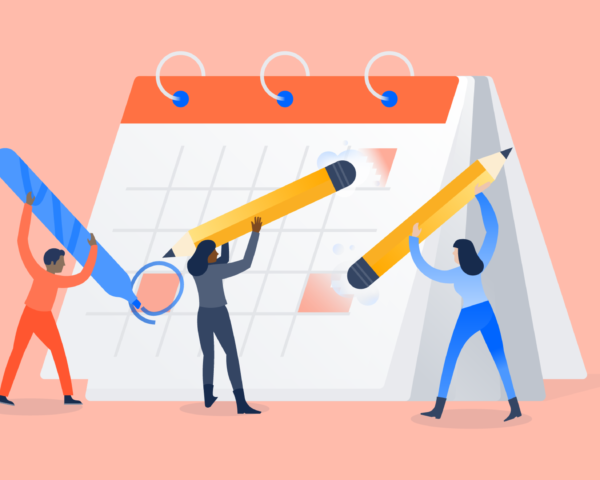We’ve all heard how important lifelong learning is. We cram our heads full of knowledge on a near-constant basis, with the assumption that the more we know, the more we’ll be able to accomplish. Technology has only aided and abetted this information quest with answers available instantly at our fingertips. But, does more knowledge actually make us more effective?
What is unlearning?
Unlearning is the art of stopping a habit or ritual. To unlearn, you must identify the information, beliefs, or behaviors that you have been acting upon that are not valuable to you anymore, and actively forget them. Unlearning helps you free up space for newer information and insights.
Unlearning is incredibly beneficial from a neurological perspective. Too much information can bog the brain down and prevent it from making decisions, which is the brain’s ultimate goal when it comes to information acquisition. Some researchers now argue that forgetting information is healthy because it allows our brains to free up the space to be able to make decisions faster.
Unlearning happens in big – and small – ways all the time. A simple example of this is with email. Responding to email as soon as you received it used to be seen as the height of productivity. Now, with more research emerging about digital distractions and productivity, experts suggest that you set aside a specific time to check and respond to email so that you can have time to think.
Why unlearning is important
Unlearning is a powerful tool for your professional growth and development because it allows you to adapt to change and work more effectively.
As you improve yourself, you’ll set the standard for those around you to adapt and change as well.
The process of unlearning
Because much of what we know is ingrained into our daily habits and core beliefs, unlearning takes a conscious effort. Here’s how to do it:
1. Discover what’s not working
We make countless decisions every day. Some people clock that number at 35,000. Of course, we’d like to think that most of those decisions are intentional.
But Charles Duhigg, author of The Power of Habit: Why We Do What We Do in Life and Business, estimates that 40 to 45 percent of what we do isn’t a decision at all, but a habit. Duhigg says these automatic actions occur because the thinking behind our habits happens in one of the oldest parts of our brain, the basal ganglia, where thinking doesn’t feel as active as the thinking that happens in the prefrontal cortex.
One of the ways to begin unlearning is by actively thinking about the decisions you make that seem automatic. Which beliefs, habits, and mindsets are serving you well? Which ones aren’t? And which habits aren’t serving you as well as they once did?
Teams at Atlassian uncover any habits that aren’t serving them well by doing retrospectives at the end of each sprint or project. They look back on the work they did and ask, “What went well this last sprint?” “What should we continue doing?” And importantly, “What should we stop doing?”
Tip
In the unlearning process, don’t beat yourself up. Instead of thinking of your old ways of being as wrong or mistakes, you can recognize them as what they were: the best you could do at the time with the information you had.
How to unlearn
Use a retrospective technique called the 4 Ls. Write down what you loved doing, longed to do, loathed doing, and learned in the past week. Then, think about how these things could inform what to continue doing, what to make more time for, and what to let go of.
2. Start with your foundational habits
Of course, questioning each one of the many decisions we make each day will lead to analysis paralysis. The key to making the most of unlearning is to find the foundational beliefs, habits, and mindsets that make the most impact on your life and work. Charles Duhigg calls these foundational habits “keystone habits” because they influence a series of other habits.
For instance, one of my keystone habits is getting up early and starting my day. I find that when I get up early, at around 5 a.m., I’m more motivated, more productive, and more focused throughout the day. If I get up when I absolutely have to at 7 a.m. and rush to work, I feel scattered, and this feeling sticks with me for the rest of the day.
Carol Dweck, Stanford University Professor and author of Mindset: The Psychology of Success, argues that there are two kinds of mindsets: fixed mindsets and growth mindsets. People who operate with a fixed mindset believe that “their basic qualities, like their intelligence or talent, are simply fixed traits,” whereas people who have growth mindsets “believe that their most basic abilities can be developed through dedication and hard work.”
Going back to my habit of getting up early, I’ll be honest. I don’t like getting up early. There’s nothing more painful than leaving that cozy bed and waking up my body. For years, I tried to change it by setting five alarms only to snooze them all.
But then I realized that the problem wasn’t the alarms, or the bed, or even the time I went to sleep. It was that I identified as someone who likes to sleep in, not as someone who gets up and attacks the day. It was about my mindset. It wasn’t easy, but the more I started thinking of myself as a person who could have productive mornings, the more they started happening.
How to unlearn
Spend some time thinking about what your keystone beliefs, habits, and mindsets. Maybe it’s a simple as “I’m not a morning person” or as complex as “I’ll never be able to be a manager”. How might those beliefs change if you were to apply a growth mindset?
3. Prioritize what’s most important
Time is fixed. Progress isn’t. You’ll only ever have so much time to do so many things, so you need to make sure they’re the right things. You’re probably getting some kind of reward from nearly everything you do. Even procrastination gives you the immediate reward of relief from a task that you see as undesirable. You might even be doing something semi-productive while avoiding what you know is your true work. But if you really think about it, those avoidance moments probably aren’t as satisfying as completing the task that will give you the biggest return.
As you evaluate how you spend your time and where you put your attention, look for areas where you might not be getting the maximum benefit from your investment, and unlearn those beliefs, habits, and mindsets.
James Clear, author of Atomic Habits, talks about a hypothetical “life punch card” where you only have 20 slots to make time investments into things that are important to you.
Given this limitation, instead of the infinite choices we have now, we’d make more careful decisions with our time by eliminating the things that didn’t give us the most bang for our buck. Really, though, we do have a punch card, only there are 24 slots and we call them “hours.” We owe it to ourselves to unlearn the beliefs, habits, and mindsets that aren’t paying off like we’d like them to and replace them with something else. The power of unlearning is that it allows us to focus on outcomes, not outputs.
How to unlearn
Make a list of items that are most important to you. Then, make a list of the things you do every day. Cross-reference those two lists to find out how what you do contributes (or detracts from) what’s important. By unlearning or eliminating anything that doesn’t contribute to them, you will end up prioritizing the most important elements of your life.
4. Get out of your comfort zone
You won’t know if you’re maximizing your investments if you don’t consider new ones every once in a while. The trick is to do so intentionally. Frans Johansson, in his book The Medici Effect, argues that innovation happens when different ideas, practices, and fields of study intersect.
Johansson suggests forcing ideas together to find new ways of solving problems. He tells the story of the Eastgate Centre shopping center in Zimbabwe, whose design is inspired by entomology, the study of insects.
The architects needed to create a structure where people could be comfortable indoors during triple-digit days and freezing nights – without consuming a lot of energy. They found the perfect solution in an unexpected place: African termite mounds. To unearth this unlikely connection, the architects stepped out of their offices and into the environment, making a concerted effort to find a new way to solve heating and cooling challenges.
How to unlearn
Make time to intentionally explore topics that are completely out of your area of expertise.
For instance, you could take a walk outside, and practice making a connection between the first two objects you see. Ask questions like, “What do they have in common?” or, “How could these two things work together?” Use word association to try to link the two. The key is to avoid finding the obvious connections. The more opposite the items or absurd the connection, the better. The goal is to get out of your usual constraints and thought patterns. You might just stumble on a truly great idea.











































